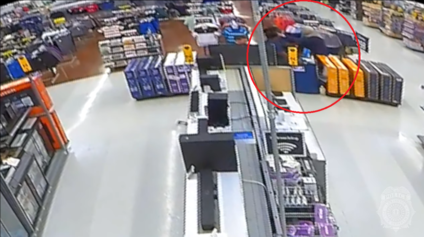Toyota Motor Corp plans to build Lexus ES 350 sedans at an existing Kentucky plant, the first U.S. production for its luxury brand, as Chief Executive Officer Akio Toyoda pushes to localize output in its biggest markets.
Toyoda and Jim Lentz, Toyota’s North American chief, said Friday in New York that production of the ES, the top-selling Lexus car in the U.S., will start at its Georgetown, Ky., complex in 2015. The company said it’s investing $360 million to add a Lexus line, expanding Georgetown’s capacity by 50,000 vehicles to more than 550,000 a year.
“It is fitting that the first country to build the ES outside of Japan is the United States because this is home for Lexus. It is where the brand was founded,” Toyoda said. The U.S. “is still the biggest market for our luxury brand.”
Lexus, a major source of profit for Toyota City, Japan- based Toyota, was dethroned by Bayerische Motoren Werke AG ‘s BMW and Daimler AG’s Mercedes-Benz as the U.S. luxury sales leader in 2011, after 11 years as No. 1. Toyota is looking to revamp Lexus, making its models more like performance cars and less like family cars, as it competes with the German companies.
Toyota, the world’s largest automaker, said today it will add 750 workers for the project. Kentucky said this week it would offer Toyota tax credits worth as much as $146.5 million to expand the manufacturing operation that’s already Toyota’s largest in North America. Kentucky Governor Steve Beshear, speaking at Georgetown, said Toyota plans to invest $531 million at the site, including the Lexus line.
Most ES sales are “in the U.S. — it’s not really a big seller in Japan,” said Koji Endo, an analyst with Advanced Research Japan in Tokyo, who estimates Lexus currently contributes about 20 percent of Toyota’s global profit. “Moving it there makes sense.”
Japan’s 2011 earthquake and tsunami also affected the company’s decision to build the Lexus model in the U.S., Toyoda said. The natural disasters reduced output of vehicles and components for Toyota and other Japanese automakers.
The move is also part of Toyota’s plan to “give regions greater autonomy to make the products their customers want and achieve sustainable growth globally,” Toyoda said.
The ES shares underpinnings with Camry and Avalon sedans now built in Georgetown. It will be just the second Lexus to be assembled in North America, joining the Canadian-built RX sport utility vehicle.
While Toyoda has said the company wouldn’t add any new auto plants for three years, the Georgetown project is an expansion of an existing facility, Lentz said in an interview.
“This involves a new use for existing space, under the same roof,” Lentz said. “There’s no new brick and mortar.”
Japan’s currency has weakened against the dollar and other major currencies since late 2012, after staying near a record high in recent years that eroded profit for exported models. So far this year the yen’s value has fallen 13 percent against the dollar, the most of any major currency.
“Toyota is effecting its long-term strategy of building where it sells,” said Matt Stover, an analyst with Guggenheim Securities in Boston, who rates the company a buy. “Toyota does not want its long-term profitability tied to the gyrations of the yen.”
Toyota has revamped the Lexus GS, ES, LS and IS sedans in the past 18 months, to help fuel global sales as demand rises for luxury models in China, Southeast Asia, Latin America and Russia. Increased sales for the brand, with its higher prices and profit margins than mass-market Toyota models, also help the company expand earnings as sales of cheaper cars increase, Endo said.
“Globally, the real volume increases are coming from India, China, Brazil, but with cars that sell for under $10,000,” he said. “They have to have these higher margin products, and that’s the role of Lexus.”
Lexus probably won’t reclaim its No. 1 U.S. luxury ranking, which it held in the U.S. from 2000 through 2010, anytime soon. Toyota has said it expects to sell at least 260,000 Lexus cars and trucks this year, up 6.5 percent from a year ago and the most since 2008 when it sold about that many. Deliveries for the brand grew 16 percent in the first quarter to 56,740…
Read More: bloomberg.com


